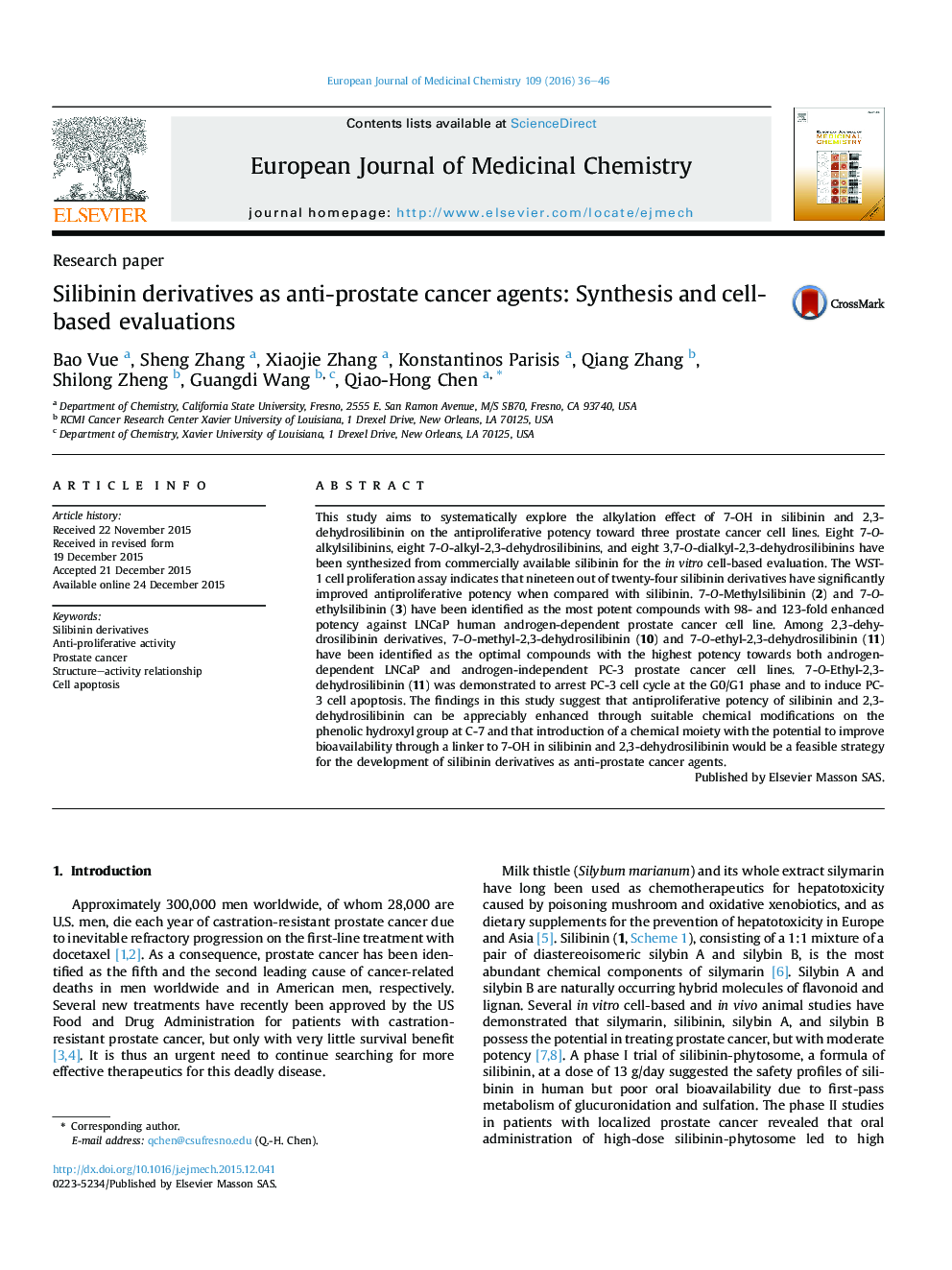| کد مقاله | کد نشریه | سال انتشار | مقاله انگلیسی | نسخه تمام متن |
|---|---|---|---|---|
| 1395226 | 1501107 | 2016 | 11 صفحه PDF | دانلود رایگان |
• 18 new and 6 known silibinin derivatives were prepared from silibinin.
• Nineteen derivatives are more potent than silibinin toward prostate cancer cells.
• Alkylation of 7-OH enhanced the anti proliferative effect.
• 7-O-Ethyl-2,3-dehydrosilibinin induced PC-3 cell G0/G1 arrest and apoptosis.
• Modification on 7-OH group is a strategy to search for improved derivatives.
This study aims to systematically explore the alkylation effect of 7-OH in silibinin and 2,3-dehydrosilibinin on the antiproliferative potency toward three prostate cancer cell lines. Eight 7-O-alkylsilibinins, eight 7-O-alkyl-2,3-dehydrosilibinins, and eight 3,7-O-dialkyl-2,3-dehydrosilibinins have been synthesized from commercially available silibinin for the in vitro cell-based evaluation. The WST-1 cell proliferation assay indicates that nineteen out of twenty-four silibinin derivatives have significantly improved antiproliferative potency when compared with silibinin. 7-O-Methylsilibinin (2) and 7-O-ethylsilibinin (3) have been identified as the most potent compounds with 98- and 123-fold enhanced potency against LNCaP human androgen-dependent prostate cancer cell line. Among 2,3-dehydrosilibinin derivatives, 7-O-methyl-2,3-dehydrosilibinin (10) and 7-O-ethyl-2,3-dehydrosilibinin (11) have been identified as the optimal compounds with the highest potency towards both androgen-dependent LNCaP and androgen-independent PC-3 prostate cancer cell lines. 7-O-Ethyl-2,3-dehydrosilibinin (11) was demonstrated to arrest PC-3 cell cycle at the G0/G1 phase and to induce PC-3 cell apoptosis. The findings in this study suggest that antiproliferative potency of silibinin and 2,3-dehydrosilibinin can be appreciably enhanced through suitable chemical modifications on the phenolic hydroxyl group at C-7 and that introduction of a chemical moiety with the potential to improve bioavailability through a linker to 7-OH in silibinin and 2,3-dehydrosilibinin would be a feasible strategy for the development of silibinin derivatives as anti-prostate cancer agents.
Figure optionsDownload as PowerPoint slide
Journal: European Journal of Medicinal Chemistry - Volume 109, 15 February 2016, Pages 36–46
